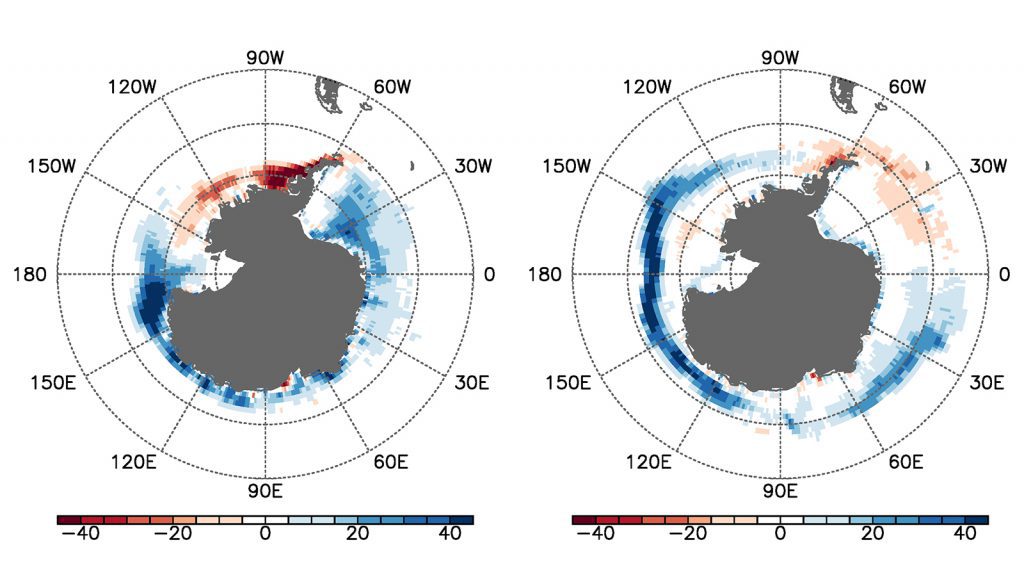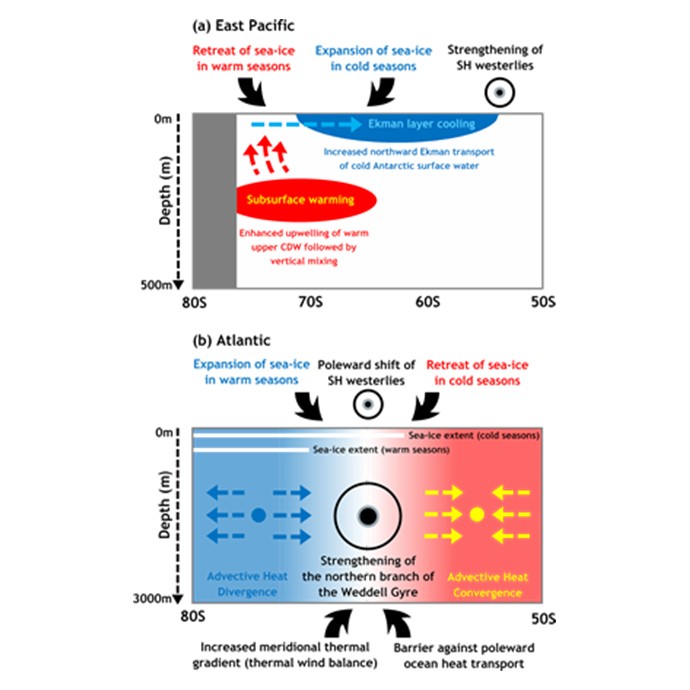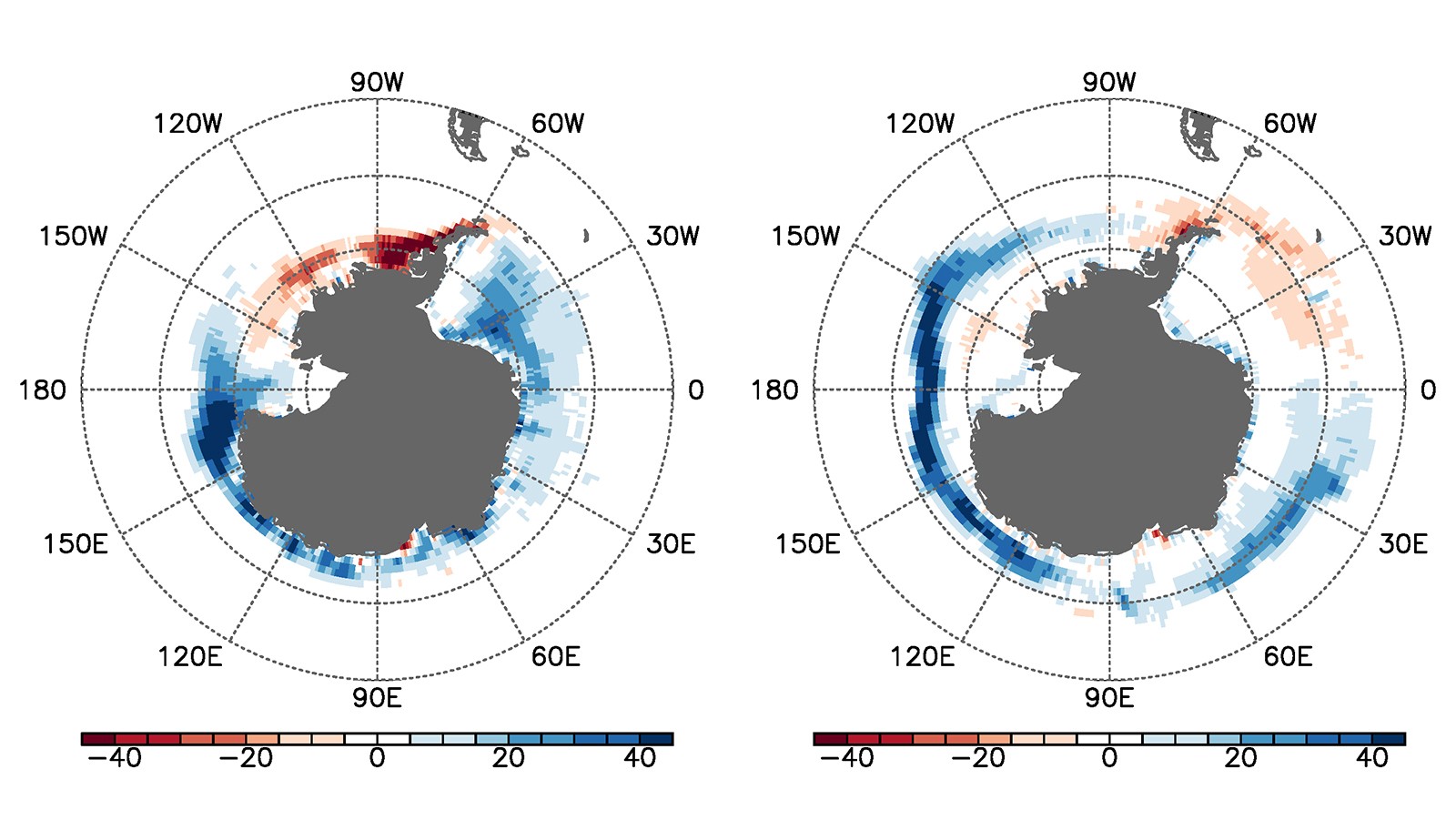Since late 1978, Antarctic sea-ice extent in the East Pacific has retreated persistently over the Amundsen and Bellingshausen Seas in warm seasons, but expanded over the Ross and Amundsen Seas in cold seasons, while an almost opposite trend has occurred in the Atlantic over the Weddell Sea (Figure 1). By using a surface-forced ocean and sea-ice coupled model that reasonably reproduces the observed sea-ice trends around West Antarctica, here we show that regional wind-driven ocean dynamics played a key role in driving these trends. In the East Pacific, the strengthening Southern Hemisphere (SH) westerlies in the region enhanced the Ekman upwelling of warm upper Circumpolar Deep Water and increased the northward Ekman transport of cold Antarctic surface water. The associated surface ocean warming south of 68°S and the cooling north of 68°S directly contributed to the retreat of sea ice in warm seasons and the expansion in cold seasons, respectively (Figure 2a). In the Atlantic, the poleward shifting SH westerlies in the region strengthened the northern branch of the Weddell Gyre, which in turn increased the meridional thermal gradient across it as constrained by the thermal wind balance (Figure 2b). Ocean heat budget analysis further suggests that the strengthened northern branch of the Weddell Gyre acted as a barrier against the poleward ocean heat transport, and thus produced anomalous heat divergence within the Weddell Gyre and anomalous heat convergence north of the gyre (Figure 2b). The associated cooling within the Weddell Gyre and the warming north of the gyre contributed to the expansion of sea ice in warm seasons and the retreat in cold seasons, respectively (Figure 2b). The leading EOFs of the detrended Antarctic sea-ice variability (i.e., interannual variability) also show spatially and seasonally contrasting sea-ice variations around West Antarctica.


Journal of Geophysical Research (JGR) Editors’ Highlight:
Wind-driven ocean dynamics impact on the contrasting sea-ice trends around West Antarctica” by S.-K. Lee et al. (2017) was selected as Journal of Geophysical Research (JGR) Editors’ Highlight: “Much of the work on the cause of Antarctic sea ice over recent decades has focused on atmospheric drivers but this paper focuses on the ocean’s role. The authors analyse the trend of Antarctic sea ice over the past 35 years on the basis of satellite data and model simulations forced with atmospheric reanalysis products. Their findings suggest that ocean processes play a crucial role in determining the seasonality of sea ice trends. They also reveal that the sea-ice response is regional.”
